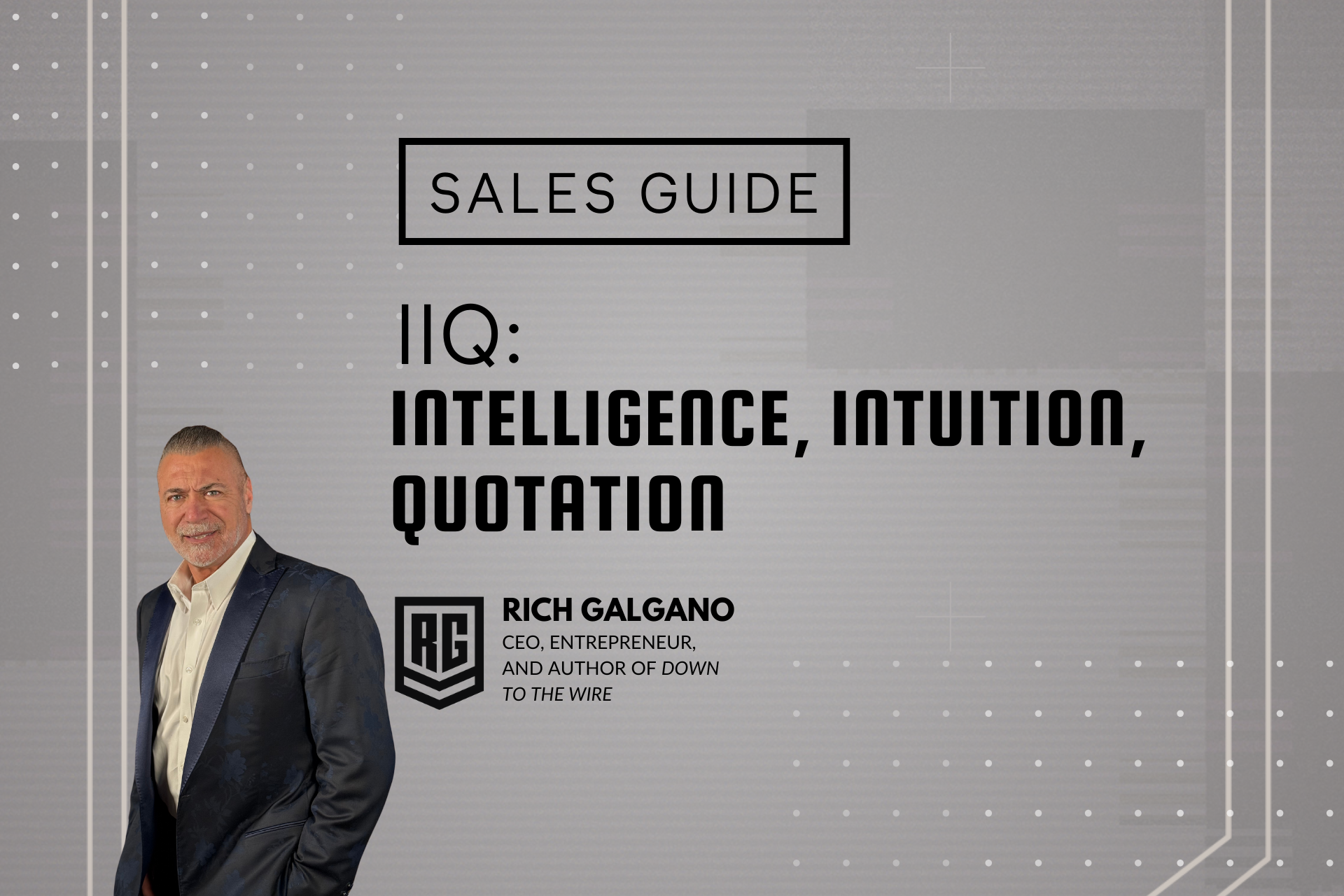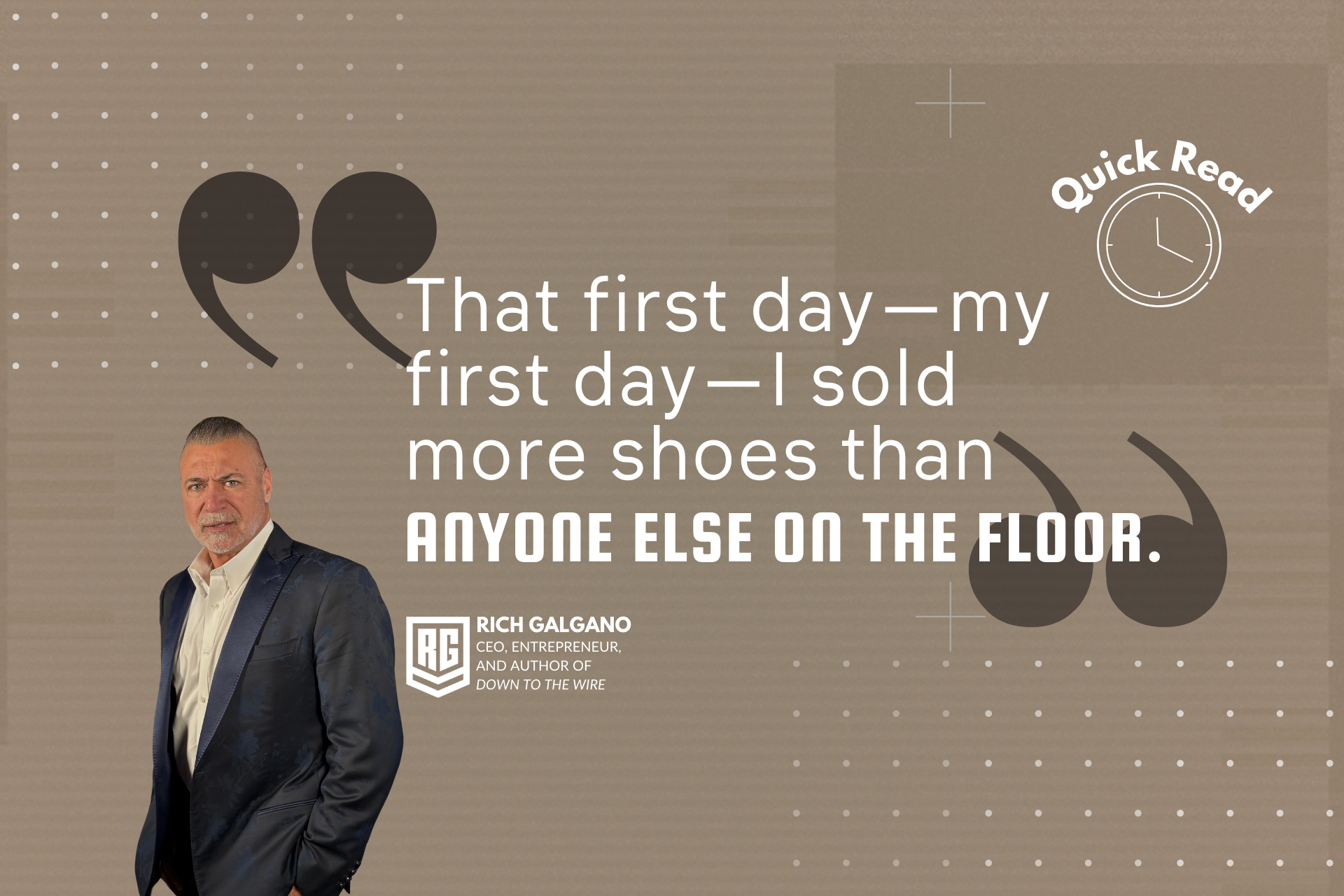"It’s Not What You Say, It’s How You Say It": The Art of Effective Communication in Sales
By Rich Galgano
Sales isn’t about delivering the perfect pitch or convincing someone to buy—it’s about how you connect and communicate. The right words, tone, and framing build trust, create alignment, and uncover insights that lead to decisions. It’s about creating an experience that leaves the prospect confident in their choice. And it all starts with discovery.
1. Frame Questions to Extract Critical Information
The discovery phase is where you gather the details that shape the rest of the conversation. Direct questions can feel confrontational, so thoughtful framing encourages openness and comfort.
Example:
- Instead of: “Who do you buy from?”
- Try: “Do you have a preference for certain brands or manufacturers?”
This approach achieves the same goal without making the prospect feel cornered.
Another Example:
- Instead of: “How much do you purchase annually?”
- Try: “How many units do you typically install in a month?”
This lets you estimate volume without directly probing budgets, which can feel uncomfortable early on.
2. Trial Close: Check the Temperature
A trial close lets you gauge where the prospect stands without applying pressure. It’s collaborative and moves the conversation forward naturally.
Example:
- After outlining the benefits, say:
“It seems like this solution addresses the challenges we’ve discussed, especially around improving efficiency. Is there anything thing stopping us form starting the implementation process?”
This keeps the tone casual while subtly advancing toward a decision.
3. Assumption Close: Lead with Confidence
When you sense interest but haven’t secured commitment, an assumption close helps move things forward.
Example:
- The prospect is showing genuine interest, but is not still uncommitted, say:
“Let’s set up delivery for next week to keep everything on schedule. Would Wednesday or Thursday work better?”
This approach assumes agreement, making it easy for the prospect to say yes while focusing on details.
4. Address Concerns with Empathy
Hesitation often comes from weighing risks. Reassurance statements align your goals with the prospect’s and build trust.
Example:
- If they’re hesitant, for example, due to internal processes, say:
“I understand there are often multiple layers of decision-making. Is there someone else who typically provides input? We could involve them early to streamline the process and avoid delays later.”
This approach respects their process, gathers key information, and positions you as a proactive partner.
5. Turn Asks into Commitments
When a prospect makes a request, like a price concession or timeline adjustment, use it as an opportunity to secure commitment.
Example:
- Prospect: “Can you lock in pricing for six months?”
- You: “This is a big request, I will go to bat for you, knowing that if I get this done we are moving forward?”
This sets the stage tying their request to your interest in closing opportunity.
6. Focus on Enhancements, Not Just Fixes
Position your product or service as an enhancement to their current setup rather than just a fix. This approach feels empowering and forward-thinking.
Example:
- “Have you thought about how much smoother your workflow could be with a system that organizes everything in one place?”
This encourages them to envision benefits rather than dwell on current problems.
7. Empathy and Alignment: Build a True Partnership
Empathy shows you care about their success, not just the sale. When you align your goals with theirs, you can create a relationship that lasts.
Example:
- If they express frustration with their current system, this presents a great opportunity for:
“Can you help me better understand your constraints? What would the ideal solution look like for you? And if I can help would you be open to entertaining some outside input?”
This shifts the focus to collaboration and makes it clear you’re invested in solving their problem.
Closing Thought: Communication is Key
In sales, it’s not just what you say—it’s how you say it. The right tone, framing, and alignment build trust, drive meaningful conversations, and set the stage for long-term relationships.
- Enhance First, Solve Second: Position your solution as an improvement before diving into fixes.
- Empathy Always Wins: Show you’re invested in their goals, not just closing the deal.
- Frame It as a Partnership: Reinforce that you’re working together to achieve success.
When you approach every interaction with these principles, you’ll not only close deals—you’ll have the potential to build value and trust that lasts long after the sale.











